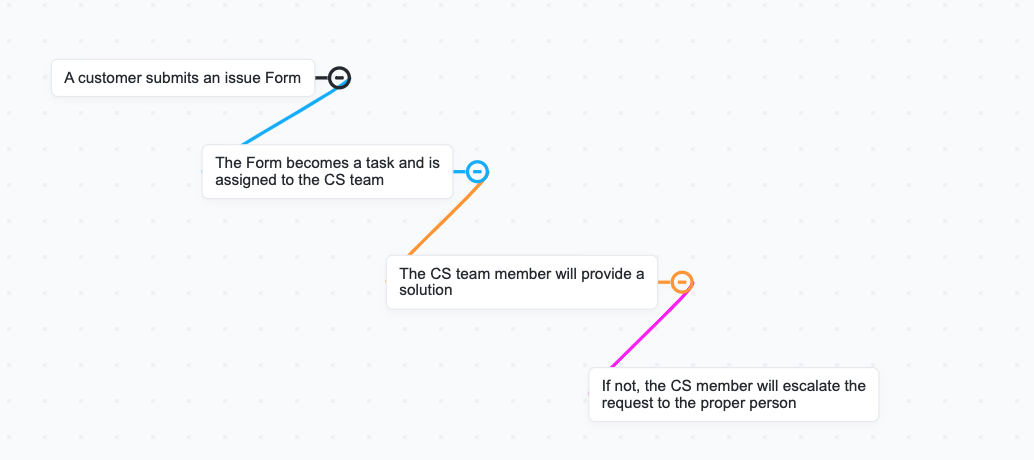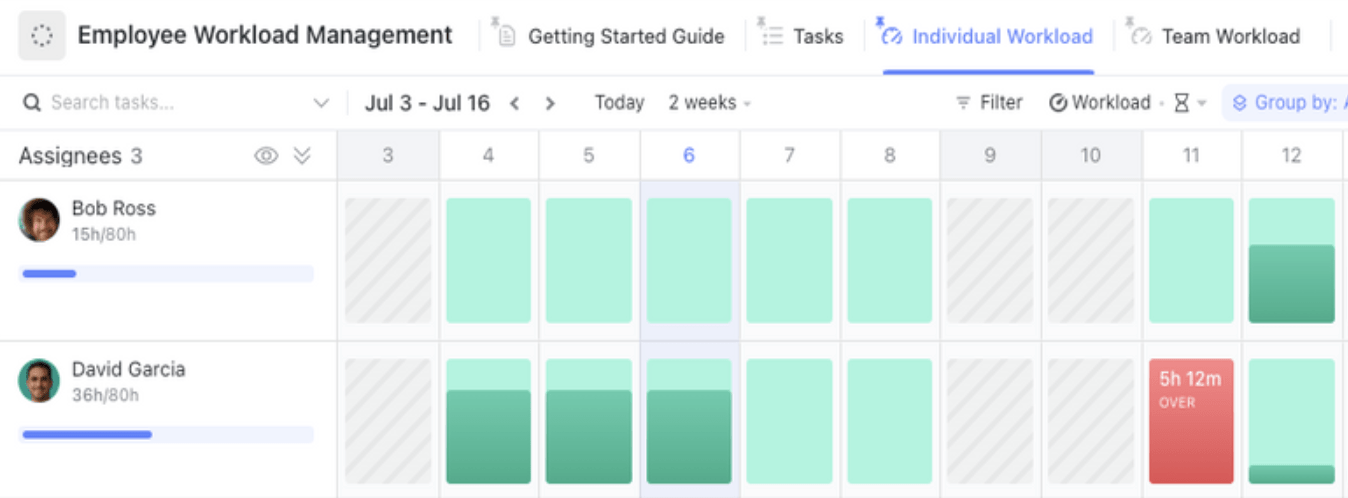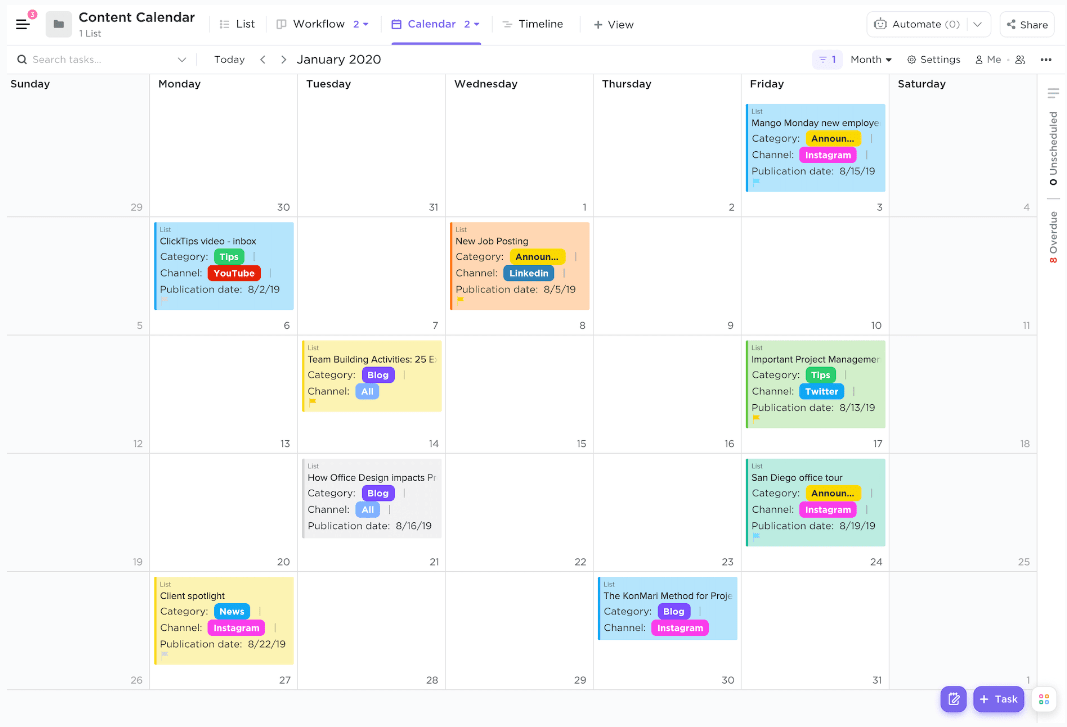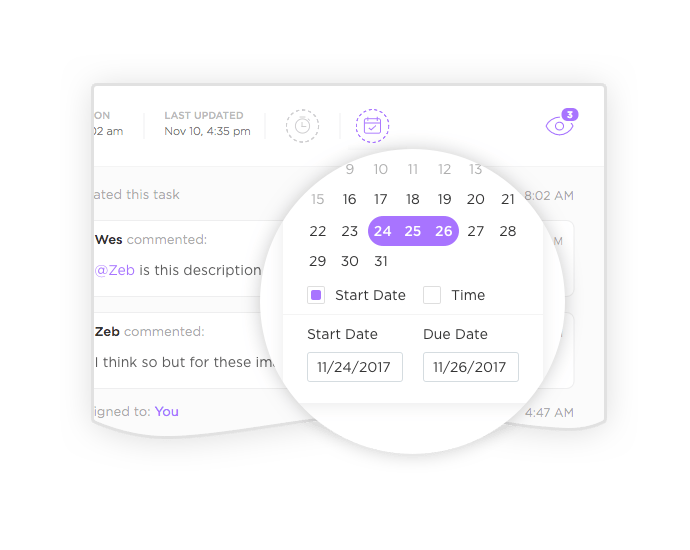

In the era of multitasking, all the productivity hacks that increase efficiency at work are crucial. For many reasons!
Do you find yourself switching platforms to complete different tasks throughout the day? This is called context switching.
Businesses must scale, and workers’ mental health is top of mind. There’s no room for getting to the end of the workday feeling productive and mentally exhausted yet not having checked off any priority tasks. And that’s precisely one of the consequences of context-switching gone wild.
Context switching is a costly problem for organizations. It’s intrinsic to the modern workplace and kills productivity. But you can reduce its negative impact on well-being and the quality of work outcomes.
Stick with us to learn what task switching entails, what it costs, and what you can do about it.
What is Context Switching?
Context switching is the successive switch in attention between multiple unrelated different tasks throughout the workday.
For instance, while preparing a slide deck for a presentation, you also check emails. Then, you switch to analyzing a weekly sales report before you interrupt that to answer instant messages. And we could keep going!

MIT scientists say switching tasks is a building block of our daily life. The human ability for task-switching is immense, and our brains are wired for cognitive flexibility.
This means we’re able to switch between contexts to which different rules and action plans apply. And that’s because we innately keep information about one context in mind while in another.
Unfortunately, cognitive flexibility comes at a price—the “switch cost.” Plus, context switching is an inevitable part of corporate work.
What is the Cost of Context Switching?
The actual cost of context switching can vary depending on factors such as the specific operating system, hardware architecture, and the number of processes being switched. Different studies and experiments have provided estimates for context switching costs, ranging from a few seconds to tens of microseconds.
- According to a literature review by Stephen Monsell, a frequent switch among tasks harms performance and increases errors immediately after each switch.
- The American Psychological Association (APA) summarized multiple research findings about the cost of context switching. They explained that the human brain (working memory) wasn’t designed for intensive task switching. And that’s why productivity decreases when switching tasks increases, especially in complexity.
- David Meyer clarified that workers who constantly switch tasks lose focus for only tens of minutes each time. But as a result, they’re 20–40% less efficient.
- Research shows from Qatalog and Cornell University’s Ellis Idea Lab that employees:
- Spend 36 minutes switching tools and apps every day
- Take, on average, nine and a half minutes to refocus
- Feel 43% more tired
- Are 45% less productive
Sure, on the surface, you might not compromise much when you switch between simple tasks. But doing that all day long is a whole another level. And to get back more focus time and deep work, teams are always looking for ways to combat context switching so a single task doesn’t feel like another burden.
Interestingly, software developers don’t feel unproductive whenever they switch contexts. A study by André N. Meyer claimed that those professionals task switch on average 13 times per hour. However, developers perceive themselves as less productive in only a few specific circumstances. For instance, discussing an unrelated topic with a teammate for half an hour is one of those circumstances.
On the other hand, writing an instant message while waiting for a build to complete doesn’t make developers feel less productive. In this specific scenario, they’re less focused on the task at hand when starting a new one.
Finally, Sophie Leroy explained that workers must stop thinking about one task to perform well after switching to another. The researcher also concluded that this scenario is unlikely if the first task is unfinished and there’s no time pressure to finish it or the next task.
Context Switching Vs Multitasking
Context switching and multitasking are two different approaches to managing multiple tasks. Context switching involves rapidly switching between tasks, often interrupting the flow of work and requiring mental effort to refocus. It can lead to decreased productivity and increased errors.
Multitasking, on the other hand, involves handling multiple tasks simultaneously. This can be done by prioritizing tasks and allocating time for each. While multitasking allows for parallel progress, it can also lead to divided attention and reduced efficiency. The choice between context switching and multitasking depends on the nature of the tasks and individual preferences for productivity and focus.
Types Context Switching & How to Combat Them
Now that you know what context switching is, let’s see what it looks like in real life.
Frequent interruptions
There’s a huge difference between context switching initiated by you or someone else. In the latter case, you’re not in control of the workflow, much less have you established a process management approach. A new task could be a serious challenge if someone is working across multiple projects. It can seriously through off a workflow.

Take the example of IT support. What happens if you define that any manager must open a support ticket for the IT team to grant the app access to new hires? That’s right! Fewer managers will interrupt the IT team with that kind of request.
Context switching solution: Create Rules & Procedures
Then, define a rule with the IT team’s timeframe for app-access granting tickets. And in that rule, stipulate, for instance, that managers must create those requests 30 days before the employee admission date. Lastly, create a to do list with the steps to grant access to different apps. And specify variations of that procedure for distinct roles.
Check out ClickUp’s workflow templates to abolish never-ending interruptions and protect your team from context switching!
Unnecessary commitments
We’ve all been there: trying to navigate a calendar full of video calls that didn’t need to occur. Our working memory can only take so much and an unnecessary context switch can derail us.
Think through this first—is te meeting optional to your role? If so, just skip it. Otherwise, do you need face-to-face input from someone at that meeting? And if so, could you carry on with your work if you didn’t get the input at that time?
If the answer is “no,” do you need to see people’s reactions to your input live? Do you need to overcome their objections? Or do you anticipate there’ll be a lot of debate?

Context switching solution: Define Appointment Times
Well, then, our advice is to define appointment slots. But you must be selective before accepting your next meeting request. And if you absolutely need to attend multiple meetings, mind their priority and schedule each to the appropriate day and hour.
Shortly, reschedule or decline the meetings that’ll unnecessarily raise the price of context switching. In addition, reserve time for the tasks you must do alone or regularly and decline meetings scheduled for those times. This scheduling self-discipline will help you organize your work in a calendar view.

Varied technologies
If you constantly check your email, instant messages, and push notifications on mobile devices, you’re context-switching too much. A report by Adobe revealed that employees get interrupted almost 14 times per day by email, collaboration tools, instant messaging tools, and social media notifications.
Context switching solution: Dedicate Time to Specific Tools
Now, you might be unable to eradicate the constant flow of emails, messages, and notifications. But you can certainly control the way they influence your work.

Book times to check and answer incoming requests and avoid doing that outside of those times. Dedicate different slots to specific tools, apps, or mobile devices like your smartphone. And configure those slots to reduce the context switching costs while not compromising timely communication.
Unbatched tasks
If you frequently find yourself interspersing related tasks with other tasks, you must start batching them. This is a fantastic way to avoid unnecessary context-switching.
Context switching solution: Batch Related Tasks
Task batching consists of grouping related tasks to minimize the cost of context switching. After all, context switching is all about alternating between unrelated tasks, and having the project management tools to help you.

For instance, analyzing customer reviews and customer service reports are product development tasks. And if you’re brainstorming your product roadmap, it makes sense to batch those important tasks.
Simply put, task batching corresponds to doing one related task after another. And as to support solutions, Pomodoro apps are pretty effective at assisting employees with defining and keeping the focus through one task or many similar tasks.

Time blocking is another effective strategy that works by blocking time on your schedule to batch similar tasks for a more productive time at work.
ClickUp has time-blocking templates to help you escape the cost of context-switching by batching tasks!
Back-to-back tasks
Do you feel like you don’t have time to breathe between different tasks? Then, you must buffer them throughout the day.
Context switching solution: Take Breaks
As counterintuitive as it may sound, taking short breaks between different tasks (meetings included) increases focus and productivity. And an excellent way not to forget that is to configure your calendar so that the default event duration excludes the time for a break.
10 More Ways to Avoid Context Switching
- Identify your context switches: Recognize when you’re switching between tasks and prioritize accordingly.
- Set your priorities: Determine the most important tasks and focus on them first.
- Block time for your tasks: Allocate dedicated time blocks for specific tasks to maintain focus.
- Create a distraction-free environment: Minimize noise, clutter, and interruptions in your workspace.
- Proactively manage your email: Check your email only at specific times to avoid constant interruptions.
- Use time management techniques: Try methods like the Pomodoro Technique to stay focused on one task at a time.
- Minimize interruptions from coworkers: Establish boundaries and communicate your need for uninterrupted work time.
- Consolidate recurring meetings: Schedule meetings together to minimize disruptions to deep work.
- Determine a schedule for non-urgent messages: Set specific times to respond to notifications and messages.
- Audit distractions and use trigger-based systems: Identify and eliminate distractions, record process videos, and implement systems to minimize context switching.
Context Switching Example
Let us tell you the story of Pharmacy Mentor and how we helped them reduce context switching with ClickUp. Pharmacy Mentor employees were overloaded with emails and following inconsistent project management practices. Consequently, handling their client operations was a struggle.
As if that wasn’t painful enough, the armor of apps they used generated constant context switches. Inevitably, the cost of each context switch was high, and productivity was affected.
Consolidating Pharmacy Mentor’s project management tools raised the collaboration levels across the company. Instead of relying on Less Annoying CRM, Trello, Google Docs, and a whiteboarding tool separately, they adopted ClickUp. Now, they collaborate within tickets instead of having endless meetings, emails, and instant messages—actively to combat context switching.

And so, ClickUp became Pharmacy Mentor’s one platform for client account collaboration, communication, and project management. That allowed them to manage clients more efficiently and deliver a better client experience—without all the different apps.
With ClickUp integrations, Pharmacy Mentor doubled their productivity. They also decreased duplicate work thanks to ClickUp automations and reminders.
Peek at our blog if you’re curious about the best ClickUp integrations!
Manage Multiple Tasks & Reduce Context Switching with ClickUp
If you’re done with paying the price for context switching, you must look into tool consolidation. And ClickUp has a comprehensive list of native integrations for that purpose. Managing multiple tasks can be challenging, but it doesn’t have to be that way.
Reduce context switching with the help of ClickUp’s power project management and task management features. Want to see how ClickUp can further reduce unnecessary context switching and save your team a boatload of time?
Schedule your on-demand demo with ClickUp!



